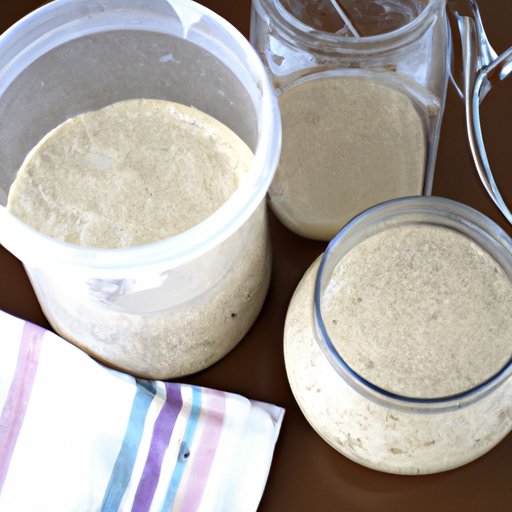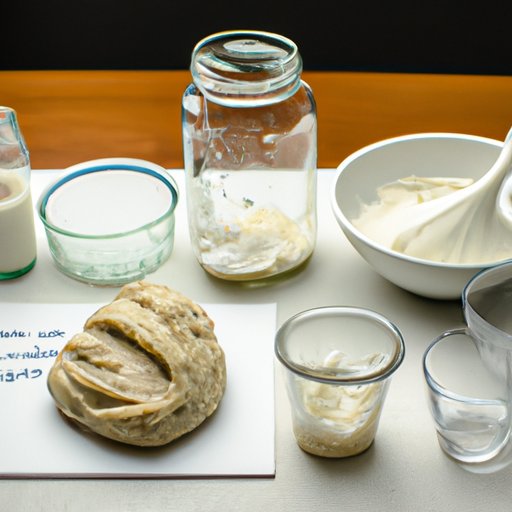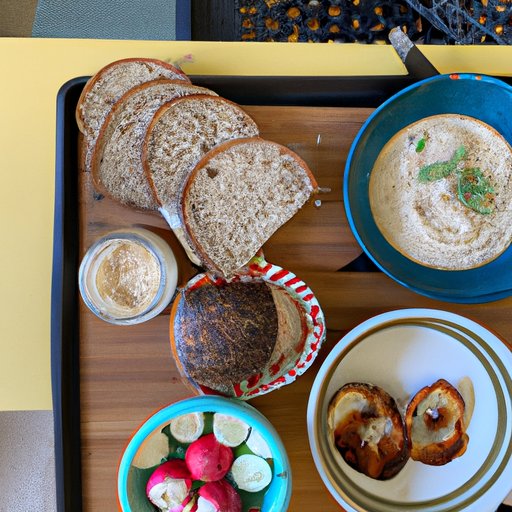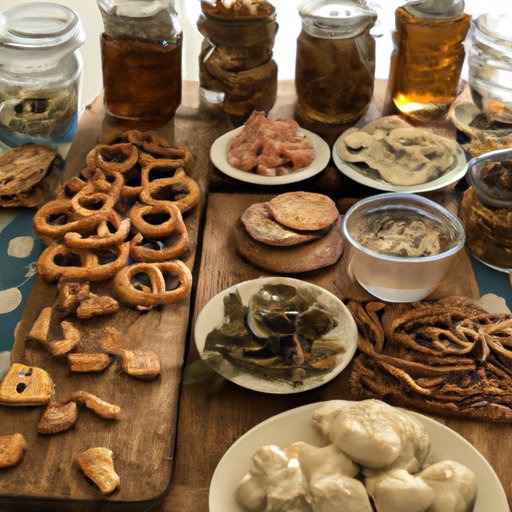Introduction
Sourdough starter is a live culture of yeast and bacteria that is used in baking to add flavor and texture to bread. It’s been around since ancient times and was once the only leavening agent used in bread-making before commercial yeast was developed. Today, it is still a popular choice among home bakers due to its distinct flavor and ability to create light and airy loaves of bread.
Not only is sourdough bread delicious, but it also offers several health benefits. Studies have shown that sourdough bread is easier to digest than other types of breads because the fermentation process helps break down starches and proteins. Additionally, sourdough bread has a low glycemic index, which means it won’t cause spikes in blood sugar levels. And because sourdough bread is made with natural ingredients such as flour, water, and salt, it is free from additives and preservatives.

Sourdough Starter Basics: What You Need to Know
Making a sourdough starter is simple and requires just two ingredients: flour and water. All-purpose flour or bread flour work best, but other types of flours can be used as well. Start by combining equal parts of flour and water in a container. Stir until blended, cover the container, and let it sit at room temperature for 24 hours.
After 24 hours, discard half of the mixture and stir in an additional equal part of flour and water. Cover the container and let it sit for another 24 hours. Repeat this process for a few days until the starter becomes bubbly and active. This indicates that the yeast and bacteria in the starter are alive and ready to use. Once the starter is active, you can begin to feed it daily with equal parts of flour and water.
Maintaining a sourdough starter is easy and only requires regular feeding and occasional discarding. The starter should be fed every 12-24 hours with equal parts of flour and water. Discard any excess starter that is not being used for baking. You can store your sourdough starter in the refrigerator for up to two weeks. If you plan on using it more often, you can keep it at room temperature and feed it every 12 hours.

Tips for Working with Sourdough Starter
Working with sourdough starter doesn’t have to be intimidating. Here are some tips to help you get started:
Feeding: When feeding your starter, make sure to use enough flour and water to ensure that the starter is active and bubbly. Too little flour or water can lead to a sluggish starter that will not rise properly when baking. Additionally, be sure to use lukewarm water when feeding your starter as hot water can kill the yeast.
Fermenting: To ensure that your starter is properly fermented, it should be left out at room temperature for at least 8 hours after each feeding. This will allow the yeast and bacteria time to work their magic and create those characteristic sourdough flavors. If you don’t have time to wait 8 hours, you can speed up the process by using warm water when feeding the starter and leaving it out for a longer period of time.
Storing: Sourdough starter can be stored in the refrigerator for up to two weeks. To store it longer, freeze it in an airtight container. When you’re ready to use it, simply thaw the frozen starter and feed it with equal parts of flour and water. Be sure to discard any excess starter that is not being used for baking.
Troubleshooting Common Sourdough Starter Problems
If your sourdough starter isn’t rising or producing bubbles, there may be a few reasons why. Here are some common problems and how to fix them:
Poorly Fed Starter: If your starter isn’t rising or producing bubbles, it may be because it hasn’t been fed enough. Make sure to use enough flour and water when feeding your starter. Additionally, be sure to use lukewarm water as hot water can kill the yeast.
Overly Fermented Starter: If your starter is overly fermented, it may produce an unpleasant smell and taste. To fix this, discard half of the starter and feed it with equal parts of flour and water. This should help reduce the fermentation and restore the starter back to its normal state.
Recipes Using Sourdough Starter
Once your sourdough starter is active and ready to use, you can start baking with it! Here are some recipes to get you started:
Sourdough Breads: Sourdough breads are one of the most popular recipes to make with sourdough starter. Try making a classic sourdough or experiment with different flavor combinations such as garlic and herb, olive, or cinnamon raisin.
Sourdough Pancakes: Who says you can’t have pancakes for breakfast? Sourdough pancakes are light and fluffy and have a subtle tangy flavor. Serve with fresh fruit, honey, or maple syrup.
Sourdough Pizza Crust: Give your favorite pizza recipe a sourdough twist by using a sourdough starter in the dough. The sourdough will give the crust a unique flavor and crunchy texture.
Sourdough Biscuits: Sourdough biscuits are a delicious and easy way to use up extra sourdough starter. They are light and fluffy and perfect for serving alongside soups, stews, or salads.

Creative Ways to Use Up Sourdough Discard
Don’t want to waste your sourdough discard? Here are some creative ways to use it up:
Sourdough Crackers: Transform your sourdough discard into crunchy, flavorful crackers. Simply mix the discard with some herbs and spices, roll it out, and bake in the oven until crisp.
Sourdough Waffles: For a special weekend breakfast, try making sourdough waffles. The sourdough discard will give the waffles a unique flavor and crispy texture.
Sourdough Pretzels: Give traditional pretzels a sourdough twist by using sourdough discard in the dough. These pretzels are the perfect snack for game day or movie night.
Conclusion
Sourdough starter is a live culture of yeast and bacteria that adds flavor and texture to bread. Not only is sourdough bread delicious, but it also offers several health benefits. Making and maintaining a sourdough starter is easy and only requires regular feeding and occasional discarding. With these tips and recipes, you’ll be baking up delicious sourdough creations in no time!
From pancakes and biscuits to breads and crackers, there are so many delicious ways to use sourdough starter.
(Note: Is this article not meeting your expectations? Do you have knowledge or insights to share? Unlock new opportunities and expand your reach by joining our authors team. Click Registration to join us and share your expertise with our readers.)
